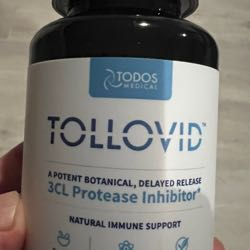Posted On: 11/19/2014 2:02:15 PM
Post# of 30081

Re: brickbybrick #11477
Read this part:
Amarantus believes that ESS has market potential of $500 million. Based on available patient population and pricing data, we believe this is a fair estimation (assumes 2,000 patients at $250,000 per treatment). Management believes that the path to approval for ESS could be rapid, potentially as quick as four years. If we assume peak sales six years after commercialization, then we are looking at $500 million in ESS sales in 2025. Historic success rate of a Phase 2a asset is around 10%. Average Price-to-Sales ratio for the biopharma industry is 5.5x. Amarantus discount rate based on the Series E convertible preferred issued on November 14, 2014 is 22% (12% coupon + 10% OID). Amarantus will owe 2% royalty on sales to Lonza. Plugging those numbers into a calculator gives us a fair-value today of $37 million; only Amarantus will require an estimated $7 million to complete the Phase 2a program and tech-transfer. The potential is there for non-dilutive capital through a new DOD grant, but until the money has been secured, we can only suspect that Amarantus will need to raise these funds themselves. So net-net, ESS looks to be worth around $30 million.
Not bad considering Amarantus paid $11.2 million (+ $5 million in potential milestones). To raise $11.2 million at $0.08 per share, Amarantus would have to issue 140 million shares. If we divide $30 million in value by 140 million shares, we get ESS worth approximately $0.21 per share. Amarantus stock is at $0.08 per share. As such, the previous rudimentary analysis tells us this is a potential accretive transaction. The key value-creating events for investors will be: 1) securing additional DOD funding, and 2) data from the Phase 2a study.
Amarantus believes that ESS has market potential of $500 million. Based on available patient population and pricing data, we believe this is a fair estimation (assumes 2,000 patients at $250,000 per treatment). Management believes that the path to approval for ESS could be rapid, potentially as quick as four years. If we assume peak sales six years after commercialization, then we are looking at $500 million in ESS sales in 2025. Historic success rate of a Phase 2a asset is around 10%. Average Price-to-Sales ratio for the biopharma industry is 5.5x. Amarantus discount rate based on the Series E convertible preferred issued on November 14, 2014 is 22% (12% coupon + 10% OID). Amarantus will owe 2% royalty on sales to Lonza. Plugging those numbers into a calculator gives us a fair-value today of $37 million; only Amarantus will require an estimated $7 million to complete the Phase 2a program and tech-transfer. The potential is there for non-dilutive capital through a new DOD grant, but until the money has been secured, we can only suspect that Amarantus will need to raise these funds themselves. So net-net, ESS looks to be worth around $30 million.
Not bad considering Amarantus paid $11.2 million (+ $5 million in potential milestones). To raise $11.2 million at $0.08 per share, Amarantus would have to issue 140 million shares. If we divide $30 million in value by 140 million shares, we get ESS worth approximately $0.21 per share. Amarantus stock is at $0.08 per share. As such, the previous rudimentary analysis tells us this is a potential accretive transaction. The key value-creating events for investors will be: 1) securing additional DOD funding, and 2) data from the Phase 2a study.
